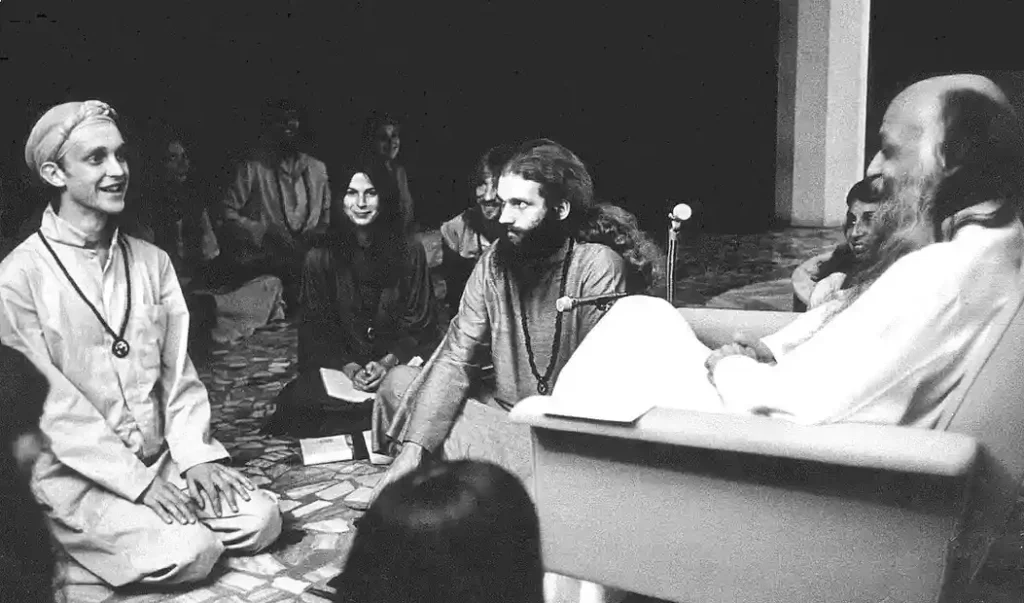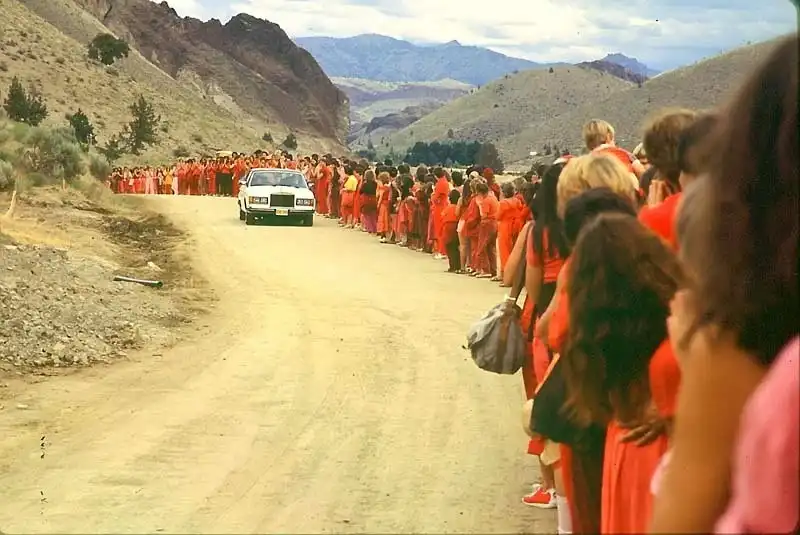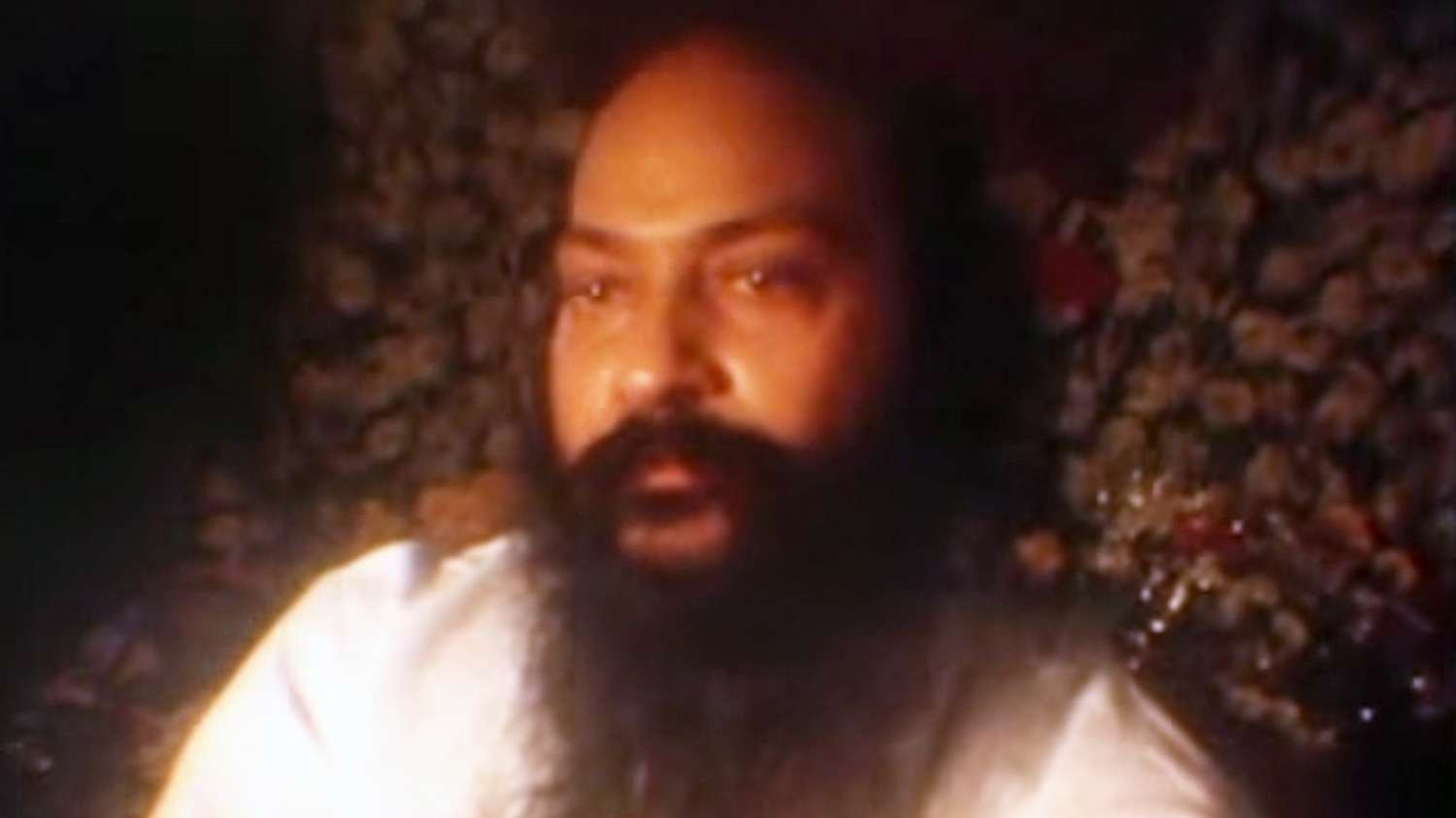Few spiritual figures in modern history have sparked as much intrigue, devotion, and controversy as Osho Rajneesh. Known by multiple names throughout his lifetime—from Bhagwan Shree Rajneesh to simply Osho—this Indian mystic created waves that still ripple through contemporary spirituality. His story reads like an epic novel: a brilliant rebel who challenged everything society held sacred, built a utopian city in the Oregon desert, faced criminal charges, and left behind a legacy that continues to divide opinion decades after his death.
Let’s peel back the layers of this enigmatic figure whose life was anything but ordinary.

The Rebellious Beginnings of a Future Guru
Born as Rajneesh Chandra Mohan Jain on December 11, 1931, in the Narsinghpur District of Madhya Pradesh, Osho entered the world during British colonial rule in India. Raised in a Jain family, he spent his formative years with his maternal grandparents—an arrangement that shaped his independent thinking.
Even as a child, Rajneesh displayed an unconventional streak. He was intellectually gifted yet notoriously rebellious, winning debating championships while questioning every religious and social norm around him. His teachers found him challenging, his peers found him magnetic, and his family found him unpredictable.
The pivotal moment came in 1953 when he experienced a spiritual awakening at age 21. This wasn’t a quiet, peaceful enlightenment—Rajneesh described it as an intense, transformative experience that fundamentally altered his perception of existence. From that point forward, his life’s trajectory was set: he would become a teacher, a provocateur, and a spiritual revolutionary.
A Revolutionary Approach to Spirituality
What made Osho stand out wasn’t just what he taught, but how he taught it. He advocated meditation and created a unique form called dynamic meditation, while rejecting traditional ascetic practices. His philosophy? Live fully in the world without attachment to it.
Beginning in the late 1960s, Osho—then calling himself Bhagwan Shree Rajneesh—started initiating seekers into what he called “Neo-Sannyas,” a path of self-exploration and meditation that didn’t require renouncing the world. This was radical. Traditional Eastern spirituality demanded monks abandon worldly pleasures; Osho told his followers to celebrate life totally.
His teachings wove together threads from Buddhism, Hinduism, Taoism, Christianity, and Western psychology. He spoke about sex and spirituality in the same breath—scandalous for the 1970s. He embraced capitalism while preaching detachment. He collected Rolls-Royces (reportedly 93 of them) while discussing enlightenment.
The number of sannyasins—his orange-robed, mala-wearing followers—grew exponentially. By the late 1970s, thousands of seekers from around the globe descended upon his ashram in Pune, India, transforming it into a spiritual powerhouse that attracted intellectuals, artists, and seekers from Western countries.

The Oregon Dream That Became a Nightmare
In 1981, Osho’s movement took an unexpected turn. Seeking refuge from Indian authorities and health concerns, he relocated to the United States. His followers established Rajneeshpuram near Antelope, Oregon—a wildly creative religious community that brought together thousands of devotees to create a kind of free-love, New Age utopia in the Oregon desert.
On paper, Rajneeshpuram was impressive. The community built infrastructure, practiced organic farming, and created a functioning city from scratch. But tensions with local Oregonians escalated quickly, fueled by cultural clashes, fear, and misunderstanding on both sides.
Then things got dark. In 1984, 751 people suffered food poisoning in The Dalles, Oregon, when a group of prominent Rajneesh followers led by Ma Anand Sheela deliberately contaminated salad bars at ten local restaurants with Salmonella. The goal? Manipulate voter turnout in local elections. It became the first confirmed bioterrorism attack in U.S. history.
Community leaders were also responsible for a planned assassination plot against Charles Turner, the United States Attorney for the District of Oregon. The commune faced federal investigation for immigration fraud, racketeering, and multiple other charges.
In October 1985, authorities arrested Osho while he was allegedly attempting to flee the country. He eventually entered an Alford Plea on two charges, was fined $400,000, and deported from America. Rajneeshpuram collapsed, and thousands of followers scattered.
How People See Osho: Saint or Charlatan?
The question “Was Osho enlightened or exploitative?” generates passionate answers depending on who’s asked.
His devotees see him as:
- A revolutionary spiritual teacher who liberated people from religious dogma
- A misunderstood genius ahead of his time
- A master who used unconventional methods to shock people into awareness
- Someone who empowered individuals to think independently
His critics label him as:
- A manipulative cult leader who exploited vulnerable seekers
- A narcissist with a god complex who enjoyed material excess
- Someone whose teachings enabled abuse within his community
- A charismatic charlatan who built an empire on manipulation
The truth? Probably somewhere in the complex middle. Osho Rajneesh’s life and ideas remain controversial and influential even today, as he challenged traditional notions of religion, society, and morality while proposing a new type of spirituality.
Osho’s Legacy in the Modern World
Osho died in 1990, but his influence hasn’t faded. His followers have redefined his contributions, reframing central elements of his teaching to make them appear less controversial, while societies in North America and Western Europe have become more accommodating to spiritual topics like yoga and meditation.
Today, the Osho International Meditation Resort in Pune attracts thousands of visitors annually. His books—over 600 of them—continue selling worldwide. His quotes populate Instagram feeds. His meditation techniques find homes in wellness centers from California to Berlin.
The Netflix documentary Wild Wild Country reignited global interest in Rajneeshpuram, introducing Osho to a new generation. Some watch and see a cautionary tale about cult dynamics; others discover teachings that resonate deeply.
The little-known facts that make Osho even more intriguing:
- He reportedly spoke over 5,000 hours of recorded discourses—possibly more than any other spiritual teacher in history
- He took a voluntary vow of silence for three years in the mid-1980s
- His personal secretary Ma Anand Sheela orchestrated the crimes in Oregon, later serving prison time while maintaining Osho knew nothing
- He changed his name from Bhagwan (meaning “God”) to Osho (derived from “oceanic experience”) before his death
- Despite criticizing organized religion fiercely, he drew extensively from its texts and traditions
The Unresolved Question
Was Osho Rajneesh a genuine mystic whose message got corrupted by power-hungry followers? Or was he a calculated manipulator who knew exactly what he was building? Perhaps both versions contain truth.
What remains undeniable is his impact. Whether seen as liberator or deceiver, his teachings continue finding audiences. His meditation centers operate globally. His vision of spirituality without renunciation influenced the modern mindfulness movement.
The complexity is precisely what makes Osho fascinating. He refused to fit into neat categories—saint or sinner, guru or conman, visionary or megalomaniac. Maybe that was always the point: to shatter our need for simple answers and force us to sit with uncomfortable complexity.
In a world still grappling with questions about spirituality, freedom, community, and authority, Osho’s story offers no easy lessons—only profound, unsettling questions worth pondering.

